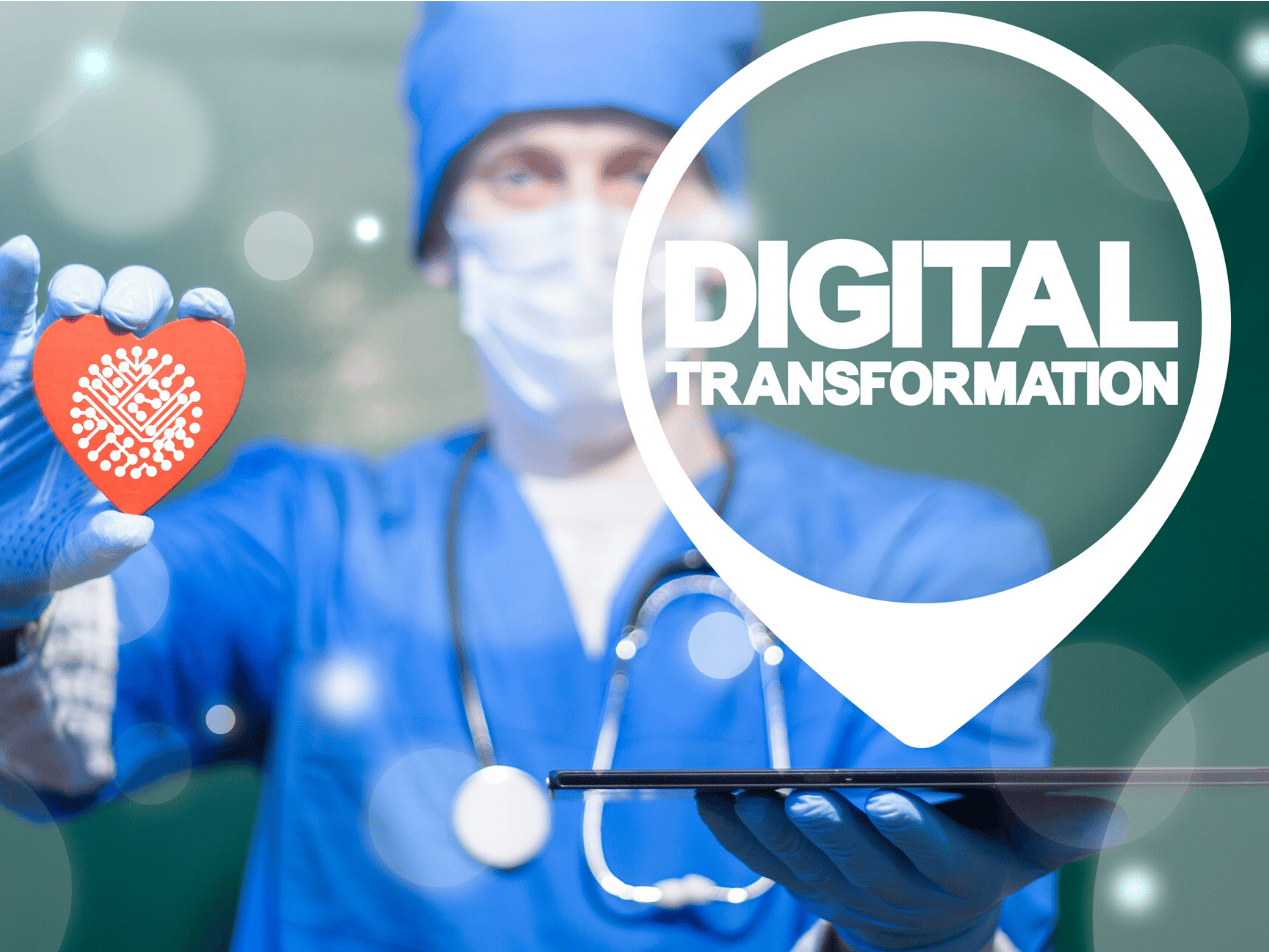
Digital transformation in healthcare refers to the positive impact of technology in the healthcare field. Technological innovation can be used to streamline physician's workflows, optimize systems, improve patient outcomes, reduce human error, and lower costs. Healthcare providers which embrace new technologies can leverage data and digital tools to deliver better health outcomes, eliminate geographic constraints, and ultimately scale operations.
The current state of healthcare technology
The healthcare and pharmaceutical industries have lagged behind other industries when it comes to implementing digital strategies. In fact, only seven percent of healthcare and pharmaceutical companies have gone digital, compared to 15 percent of companies in other industries. These days, only 20 to 30 percent of patients have access to digital technologies like medical questions or electronic reminders.
However, consumers want healthcare to be modern and convenient, consistent with their experience elsewhere.
The three barriers to digital most mentioned by leaders in the medical industry are culture and mind-set, organizational structure, and governance. However, research suggests that the companies with a long-term view outperform their peers. Therefore it behooves healthcare providers to make a long-term investment into the technologies which can bring their businesses into the 21st century.
2020 healthcare digital transformation trends
There are a number of overarching trends in healthcare digital technology which are gaining ground among healthcare professionals, which we summarize below.
Increased patient engagement
In the last few years, the healthcare industry has been shifting from volume-based care to value-based care. Healthcare providers and insurance companies are moving from a provider- and health system-driven model to one that is more based on patient outcomes. To truly help patients live longer, healthier lives, doctors must create a system of engagement.
SEE ALSO: Improve Patient Outcomes with Healthcare Email Marketing
Connecting with doctors via email
These days patients expect to connect with their doctors the same way they connect with everyone else in their lives - via email. Paubox has created a suite of HIPAA compliant email solutions which makes this possible. Paubox Email Suite allows clinicians to email their patients directly, with no plugins or portals required. Paubox Marketing, on the other hand, makes it possible for healthcare providers to take advantage of the power of personalized email marketing for the first time.
SEE ALSO: Why Paubox Marketing is the Best HIPAA Email Marketing Solution Available
It is important for modern doctors to be available by email because it is what healthcare consumers both want and expect.
Leveraging big data
Big data aggregates information through formats such as social media, ecommerce, and online transactions to identify patterns and trends. For the healthcare industry, big data can provide several important benefits, including:- Reducing medication errors: Software can flag inconsistencies between a patient’s health and drug prescriptions when there is a potential risk of a medication error.
- Facilitating preventive care: Up to 28% of emergency room visits are recurring patients, also known as "frequent flyers." Big data analysis can identify these people and create preventive care plans to keep them from returning.
- More accurate staffing: Predictive analysis can help hospitals and clinics estimate future admission rates, which helps with staff allocation.
The growth of wearable medical devices
Healthcare companies have begun collecting health data from patients' medical devices, including wearable technology. The wearable medical device market is expected to reach more than $27 million by 2023, a spectacular jump from almost $8 million in 2017. Health apps and wearables for preventative care could save the US healthcare system close to $7 billion per year.
Treating patients with virtual reality
Virtual reality's myriad of applications for healthcare are profoundly changing the way patients are treated. From startups to pharma giants, everyone is betting on VR. The global virtual and augmented reality in healthcare market is expected to reach $5.1 billion by 2025.
Artificial intelligence
The AI-powered tools market is expected to exceed $34 billion by 2025, which indicates that this technology will shape many facets of the industry. Overall, AI is predicted to bring $150 billion dollars in annual savings for the US healthcare economy by 2026. The real power of AI can be best observed in areas like precision medicine, medical imaging, drug discovery, and genomics. For example, top pharmaceutical and biotechnology companies are using machine learning algorithms to shorten the drug development cycle. In fact, AI is helping with COVID-19 vaccine development. Scientists are using AI to suggest vaccine components by understanding viral protein structures, and it is helping medical researchers scour tens of thousands of relevant research papers at an unprecedented pace.
Blockchain and electronic health records
Blockchain is a digital ledger, or a computerized database of transactions. Shared across a network of computers, it allows customers to safely exchange financial information with suppliers. Blockchain could reinvent the way patient’s electronic health records are shared and stored by providing safer mechanisms for exchanging health data by securing it over a decentralized peer-to-peer network. This is especially useful for securing electronic health records which can sell for up to $1,000 on the black market.
SEE ALSO: Preventing Security Breaches in Healthcare
5G mobile technology for instantaneous healthcare
5G enhanced Mobile BroadBand (eMBB) can run up to 100 times faster than the current cellular connection. It will likely completely change the healthcare landscape and could lead to savings of up to $650 billion by 2025. Doctors will have access to accurate, real-time imaging of organs, soft tissue, and bones, which will greatly decrease the risk of misdiagnosis. But it is in the wearable medical device market where 5G will cause the greatest disruption. With 5G, clinicians will be able to instantaneously collect medical data from wearable devices and make fast, reliable diagnoses.
Increased adoption of telemedicine
One of the key motivations for healthcare’s digital transformation is to replace labor-intensive, manual, in-person encounters in healthcare facilities with digital encounters, which can take place wherever and whenever the patient happens to be. This is not only a more economic and patient-centered form of care, but it also keeps infections out of hospitals and medical facilities by treating people at home when possible. The latest concerns around the spread of COVID-19 is an important example of how continued investments in the healthcare digital transformation will reduce disease transmission. Paubox's own research has shown that many healthcare providers are starting to offer telehealth services for the first time as a direct result of the COVID-19 outbreak.
Digital strategies for fighting a pandemic
COVID-19 has in fact spurred on the healthcare digital transformation in a number of ways in addition to telemedicine.
SEE ALSO: HIPAA Critical Podcast Episode 11: COVID-19’s Impact on Technology in Healthcare, Securely Working From Home, Interview with Paddy Padmanabahn
The American Hospital Association delineates some of the most promising developments in how hospitals and health systems are leveraging digital tools and technology to handle the rapid influx of novel coronavirus patients here. From new partnerships between hospitals and startups, to doctors leveraging social media, to companies using 3D printers to manufacture more personal protective equipment, this pandemic is motivating a lot of creativity to solve a complicated problem.
Subscribe to Paubox Weekly
Every Friday we'll bring you the most important news from Paubox. Our aim is to make you smarter, faster.




